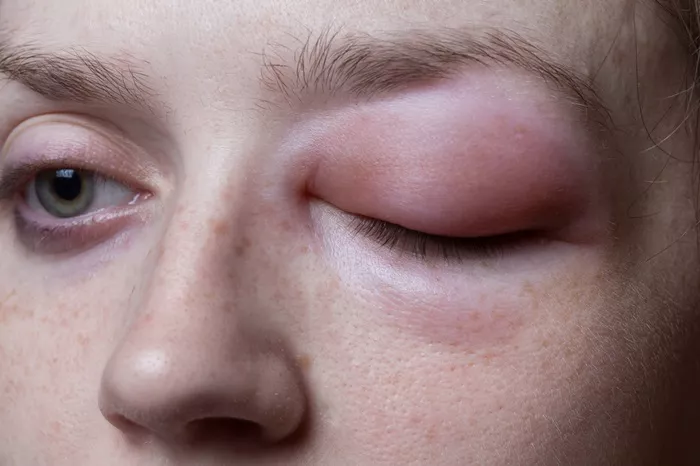Scars, especially those resulting from cuts, can have a lasting impact on a person’s appearance and self-esteem. Whether they are a result of an accident, surgery, or other traumatic injuries, many people seek solutions to reduce the visibility of these marks. Mederma, one of the most popular scar treatment products on the market, claims to help improve the appearance of scars over time. But does Mederma really work for old cut marks? In this article, we will explore what Mederma is, how it works, and whether it is effective at reducing or removing old cut marks.
What is Mederma?
Mederma is a topical gel or cream that is commonly used to treat scars. Its active ingredient is allium cepa extract, also known as onion extract, which is believed to have anti-inflammatory properties. Mederma is often recommended for treating different types of scars, including those caused by surgery, burns, and cuts. The product is widely available and marketed as an easy and non-invasive solution for scar treatment.
Mederma also contains other ingredients such as dimethicone, which is a form of silicone that helps form a protective layer over the scar, and preservatives that help maintain the product’s shelf life. Its most significant claim is that it can reduce the appearance of scars by improving skin texture, color, and overall appearance when used consistently over time.
Understanding Scarring and Cut Marks
Before diving into whether Mederma can effectively treat old cut marks, it is important to understand how scarring occurs. When the skin is injured, the body goes into repair mode and begins the process of forming a scar. The skin cells regenerate to close the wound, but the repair process often results in scar tissue. This tissue is different from the surrounding skin in color, texture, and sometimes in elasticity.
Cut marks, or scars caused by cuts, can vary in appearance depending on the severity of the injury, the area of the body affected, and how the skin heals. Shallow cuts typically result in lighter, less noticeable scars, while deep cuts that affect multiple layers of skin may produce thicker, more pronounced scars.
There are several different types of scars, including:
Hypertrophic scars: Raised, red scars that form when the body produces too much collagen during healing.
Keloid scars: Larger, more raised scars that extend beyond the original wound area.
Atrophic scars: Depressed or sunken scars, often seen in cases of acne or certain surgeries.
Contracture scars: Scars that form when the skin tightens due to a burn injury, often impairing movement.
Mederma is marketed as effective for a variety of scars, but it is essential to know whether it is suitable for all types of cut marks, particularly older ones.
How Does Mederma Work?
Mederma’s main ingredient, onion extract (allium cepa), has been the subject of multiple studies, which suggest that it can help reduce scar appearance by acting on several levels:
- Anti-inflammatory Effects: Onion extract is known to have anti-inflammatory properties, which can help reduce the redness and swelling associated with newer scars.
- Collagen Regulation: The extract may help regulate collagen production in the scar tissue, preventing overproduction (which leads to raised scars) or underproduction (which leads to sunken scars).
- Moisturizing: Mederma contains moisturizing agents that keep the skin hydrated, which is important for maintaining healthy skin tissue and promoting the healing process.
- Skin Softening: The product helps soften the scar tissue, which may improve the overall appearance of the scar by making it less noticeable.
Mederma also contains silicone, which is a proven ingredient for improving the appearance of scars. Silicone gel sheets and creams have long been used by dermatologists to help flatten and soften scars. Silicone works by creating a barrier over the skin that locks in moisture, which helps in the healing process and reduces the formation of thick scar tissue.
Can Mederma Remove Old Cut Marks?
The effectiveness of Mederma in treating old cut marks depends on several factors, including the type and age of the scar, as well as how consistently and correctly the product is applied.
1. Age of the Scar
When it comes to treating scars, the age of the scar plays a significant role in how effective treatments like Mederma can be. For best results, Mederma is most effective when used on newer scars. This is because the healing process is still ongoing, and the scar is still in its formative stages. During this time, Mederma can help regulate collagen production, reduce inflammation, and improve the overall appearance of the scar.
Old scars, especially those that are more than a year old, are more challenging to treat. By this time, the scar tissue has already fully formed, and the color and texture are well-established. While Mederma can still help to soften and flatten older scars, it may not completely eliminate them or restore the skin to its pre-injury appearance. In the case of very old scars, improvement is possible, but the results may not be as dramatic as those seen with newer scars.
2. Type of Scar
The type of scar also determines how well Mederma will work. For instance, Mederma may be more effective for hypertrophic and keloid scars, which are raised and often red or purple in color. The anti-inflammatory and collagen-regulating effects of Mederma can help reduce the appearance of these types of scars.
However, atrophic scars, which are sunken or indented, may not respond as well to Mederma. This is because the product primarily works to improve the texture and color of the scar, rather than to fill in or elevate the skin. In cases of atrophic scars, other treatments like microneedling, dermal fillers, or laser therapy may be more effective.
3. Consistent Use
For Mederma to be effective in reducing or removing cut marks, it is essential to use the product consistently. The product should be applied to the scar several times a day, typically once in the morning and once in the evening. It is important to follow the instructions on the packaging and be patient, as it may take several weeks or even months before noticeable improvements occur. Inconsistent use can result in less effective results, and it may be difficult to see a significant change in the scar’s appearance.
How Long Does It Take for Mederma to Work?
The time it takes for Mederma to show visible results depends on several factors, including the severity of the scar, its age, and how consistently the product is used. Most users report seeing improvement in the appearance of their scars within 8 to 12 weeks of consistent use. However, it is important to remember that Mederma is not a miracle cure and may not completely remove scars, especially older or more severe ones.
In general, individuals using Mederma should expect gradual improvement over time. While the product can help reduce the visibility of scars, it may not make them disappear entirely. For some people, continued use over a longer period may yield better results.
Are There Any Side Effects of Using Mederma?
Mederma is generally considered safe for most people, but like any skincare product, it can cause side effects in some individuals. Common side effects include mild irritation, redness, or itching at the application site. If you experience any of these symptoms, it is recommended to discontinue use and consult a healthcare professional.
In rare cases, people may have an allergic reaction to one of the ingredients in Mederma. If you experience more severe symptoms such as swelling, hives, or difficulty breathing, seek medical attention immediately.
Before using Mederma, it is a good idea to do a patch test by applying a small amount of the product to a discrete area of skin to check for any allergic reactions.
Other Treatments for Old Cut Marks
While Mederma is a widely used and effective option for scar treatment, there are other treatments available that may provide more significant results, especially for older or more severe scars. Some alternatives include:
Silicone Sheets and Gels: Like Mederma, silicone-based products are a proven method for scar treatment. They can help flatten and soften scars, making them less noticeable.
Laser Therapy: Laser treatments such as fractional CO2 or pulsed dye laser therapy can help reduce the appearance of both old and new scars by stimulating collagen production and resurfacing the skin.
Microneedling: This treatment uses tiny needles to create micro-injuries in the skin, which stimulates the production of collagen and elastin, helping to improve the texture and appearance of scars.
Steroid Injections: In cases of hypertrophic or keloid scars, steroid injections can help flatten the scar and reduce inflammation.
Conclusion
Mederma can be an effective solution for improving the appearance of cut marks, especially when used consistently and on newer scars. However, its effectiveness on old cut marks may be limited, and the results will vary depending on factors such as scar age, type, and the individual’s skin. For best results, Mederma should be used as part of a comprehensive skincare routine, and patience is key, as improvements may take several weeks or months.
For older or more severe scars, additional treatments such as silicone sheets, laser therapy, or microneedling may be more effective. If you are unsure about the best treatment for your scars, it is always a good idea to consult with a dermatologist who can provide personalized advice based on your specific needs and skin type.
Related Topics


































